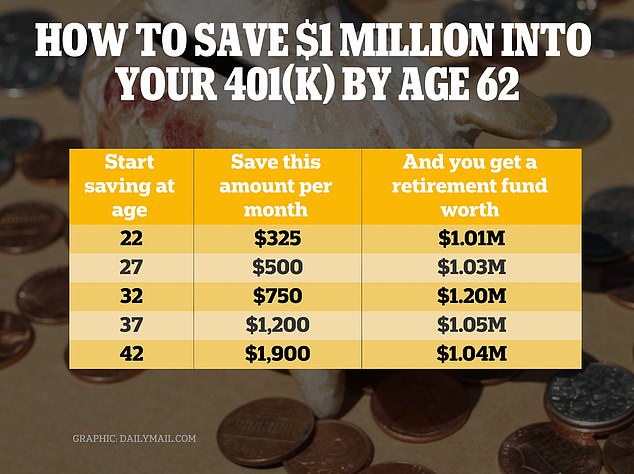Are YOU a 401(K) millionaire? Savers with seven-figures in their retirement accounts swelled by 100,000 in 2023 – and one woman tells how she is on track despite starting on $22k a year
The number of savers with $1 million in their retirement accounts will increase by about 100,000 people by 2023 – thanks to a booming stock market.
And it's not as difficult as it seems. Experts say the key is to start saving early, as 57-year-old Caroline Eby explained to DailyMail.com. Down the road, she explains how she's on her way to hitting seven figures, while experts say a 22-year-old can reach her goal by saving $325 a month.
About 349,000 401(K) owners and 339,000 workers with an individual retirement account (IRA) ended the year with a seven-figure balance, according to Fidelity Investments.
Although there is a slight decrease from earlier this year, the number is still well above 2022 levels, when the figures were 299,000 and 280,000 respectively.
Retirement accounts have benefited from a strong stock market, with the S&P 500 ending the year 24 percent higher than in 2022.
The number of savers with $1 million in their retirement accounts will increase by about 100,000 people by 2023, thanks to the booming stock market
A 401(K) is an employer-sponsored plan to which employees often contribute directly from their paychecks. An employee's contributions are often matched by the employer.
By comparison, IRAs can be opened by anyone, including freelancers.
Those who have managed to store a comfortable savings egg claim that it is not as difficult as it seems.
Caroline Eby told DailyMail.com that she is getting closer to the $1 million mark, despite never making more than $80,000 in her life.
The Washington, DC-based finance worker said, “I started saving at age 25, when I was making $22,000 a year in manufacturing.
'Every year I increased my contribution by 2 percent if I could afford it. I have maximized my contribution at about 12 percent.”
She added: “I have never married and have always been completely self-sufficient. I am so happy and proud of myself for the sacrifices I made 30 years ago.
“Like everyone told me, slow and steady wins the race.”
Eby had $990,000 in her account two years ago, but then lost $100,000, something she blamed on the broader economy. Now her account is “on its way back up,” she said.
It comes after experts uncovered how much workers of each age group would need to save in their 401(K) to reach $1 million by the time they retire.

Caroline Eby, 57, pictured, told DailyMail.com she is closing in on the $1 million mark despite never making more than $80,000 in her life

It comes after experts calculated the amount needed to put away each month to generate a comfortable nest egg – depending on what age you start
And it may not be as difficult as it seems. According to personal finance The motley foola 22-year-old would have to save $325 a month throughout his career to retire with $1.01 million by the time he turns 62.
If a worker didn't start saving in his 401(K) until age 27, he would have to set aside $500 a month to reach $1.03 million by the same age.
The figure rises to $750, $1,200 and $1,900 for a 32-year-old, 37-year-old and 42-year-old respectively.
The analysis assumes that the investments generate an average annual return of 8 percent, slightly lower than the average 10 percent return generated by the stock market.
According to The motley fool, A common rule of thumb when investing is to subtract your age from 110. The result is the percentage of your portfolio you should then allocate to stocks.
For example, if you are 35 years old, about 75 percent of your portfolio should consist of stocks, while 25 percent should be reserved for bonds and other conservative investments. The idea behind this theory is that younger investors can take greater risks.
